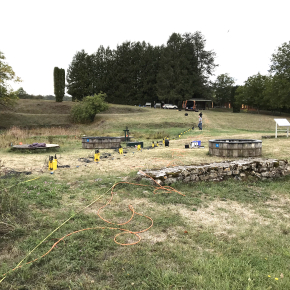Séminaire
The relation between atmospheric chemistry and transport, its application to reduce aviation's climate impact and the relation to the Paris Agreement
Prof. Volker Grewe, German Aerospace Center, Institute of Atmospheric Physics (DLR)
Aviation emissions are not included in the Paris Agreement and it is legitimate to ask how much aviation can contribute to achieve overall climate targets. This requires a detailed analysis of aviation’s climate impact that results from CO2, NOx and aerosol emissions and contrail-cirrus effects.
Description
Aviation emissions are not included in the Paris Agreement and it is legitimate to ask how much aviation can contribute to achieve overall climate targets. This requires a detailed analysis of aviation’s climate impact that results from CO2-, NOx- and aerosol emissions and contrail-cirrus effects. For example, aviation emits nitrogen oxides at around 10 to 11 km. The general circulation and the prevailing weather pattern at the time of emission controls the transport pathway of the emitted nitrogen oxides. In turn, the transport pathways controls in what kind of chemical environment the emitted NOx is transported to and how much ozone is produced.
This relation between weather and chemistry enables the optimisation of aircraft routing with respect to their total climate impact. In general, options to mitigate aviation’s climate impact include a wide range of new aircraft/engine technologies, fuels and operational measures. Clearly, with current technologies and regulations, the aviation’s contribution to climate change will increase. The transition to an air traffic system that aims at reducing its climate impact is currently ongoing. The future will show where the journey is going.
Informations supplémentaires
Le séminaire se tiendra à Jussieu, dans la salle de l’IPSL, tour 45-55, salle 201.






